Granulation is an ancient jewelry-making technique where you fuse tiny spheres of precious metal onto a base surface to create intricate decorative patterns. You’ll find this 5,000-year-old craft originated in Mesopotamia and was perfected by Etruscan artisans who developed sophisticated methods like colloidal soldering. The process involves creating small gold granules, positioning them with organic adhesives, then carefully heating to bond them without melting. Modern jewelers continue using these traditional methods to achieve stunning textural effects that’ll reveal fascinating secrets of ancient craftsmanship.
The Ancient Origins of Granulation Technique
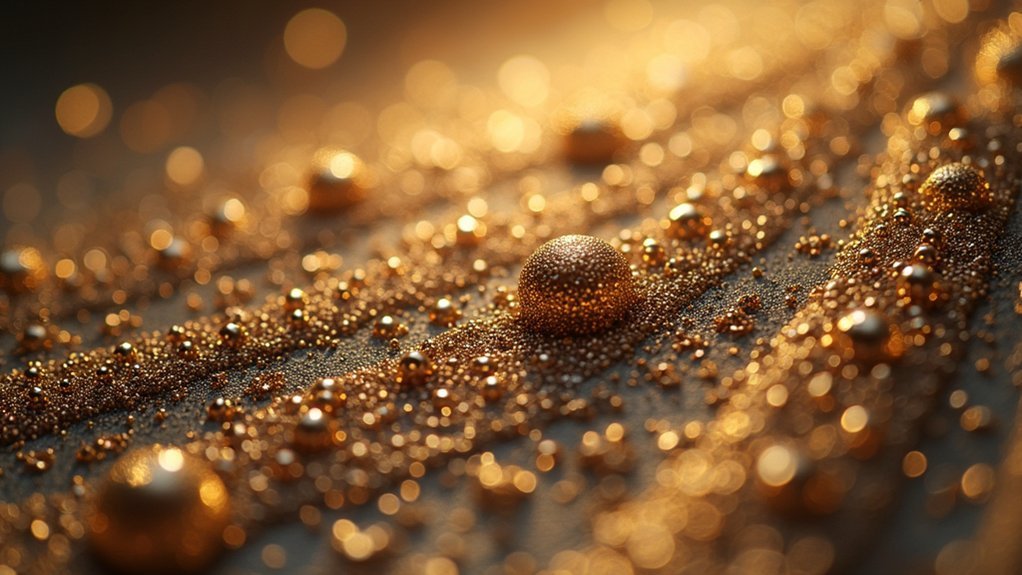
While modern jewelry makers rely on sophisticated tools and techniques, the art of granulation traces its roots back over 5,000 years to ancient Mesopotamia.
You’ll find the earliest examples of this decorative technique in royal tombs at Ur, dating to 3000 BCE. Ancient craftsmen created granulation by affixing tiny spheres of precious metal onto metal surfaces, forming intricate patterns that showcased their remarkable skill.
The Egyptians and Etruscans particularly mastered this ancient art form.
Both Egyptian and Etruscan artisans elevated granulation to extraordinary heights, creating masterpieces that remain unmatched in their technical precision and artistic beauty.
The Etruscans, flourishing during the 7th to 6th centuries BCE, achieved legendary status for their granulated jewelry.
What’s most impressive is their ability to create these delicate pieces without hard solder, relying purely on technique and artistry to bond the granules permanently.
How Granulation Spread Across Ancient Civilizations
You’ll find that granulation’s journey began in ancient Mesopotamia around 2500 B.C., where craftsmen in Ur first developed this intricate decorative technique.
As trade routes expanded, you can trace how the method spread across Anatolia, Syria, and Troy, eventually reaching the Etruscans who perfected it into an art form during the 7th to 6th centuries B.C.
You’ll notice that the Greeks and Romans later adopted these techniques, though they’d eventually shift their focus to other decorative methods like filigree.
Origins in Ancient Mesopotamia
Though granulation’s roots trace back approximately 4,500 years, its journey began in the ancient city of Ur around 2500 B.C., where skilled Mesopotamian artisans first discovered how to fuse tiny gold spheres onto jewelry surfaces.
You’ll find this ancient technique used small granules to create intricate decorative patterns that adorned precious metals. The Mesopotamian craftsmen developed methods for attaching these minute gold spheres without melting them, creating stunning textural effects on jewelry pieces.
During these ancient times, granulation represented both artistic mastery and technical innovation. The technique spread beyond Mesopotamia’s borders, eventually reaching civilizations across the Mediterranean.
The Etruscans would later perfect these methods, but Mesopotamia deserves credit as granulation’s birthplace, establishing foundational principles that influenced jewelry making for millennia.
Etruscan Mastery and Techniques
The Etruscans transformed granulation from a decorative technique into an art form during the 7th to 6th centuries BC, elevating what Mesopotamian artisans had begun into something extraordinary.
Etruscan goldsmiths mastered granulation techniques through innovative methods like colloidal soldering, which allowed them to attach tiny granules so they appeared to float delicately on jewelry surfaces. You’ll find their intricate gold jewelry featured incredibly detailed patterns that showcased unmatched technical precision.
Their influence spread beyond Italy’s borders, inspiring ancient Greek jewelry makers who adopted these sophisticated methods.
However, by the 5th century BC, Greek artisans had shifted their focus toward filigree work. The Etruscans’ legacy remained unmatched until 19th-century excavations revealed their masterpieces, sparking renewed interest in these remarkable techniques.
Greek and Roman Adoption
As Etruscan mastery spread throughout the Mediterranean, Greek artisans enthusiastically embraced granulation techniques and adapted them to suit their own aesthetic preferences.
You’ll find that the Greeks initially adopted this ancient technique from Mesopotamian origins, refining it to create intricate textures in their jewelry designs. Their craftsmanship flourished as they worked with granulated gold to produce stunning pieces that reflected their cultural values.
However, by the 5th century BC, you’d notice Greek jewelry makers largely abandoned granulation in favor of filigree work.
Meanwhile, the Etruscans continued perfecting their granulation methods during the 7th to 6th centuries BC.
Archaeological discoveries from 1800s excavations in Rome and Southern Russia revealed how both civilizations utilized this technique, demonstrating granulation’s widespread influence across ancient Mediterranean cultures.
The Three Main Styles of Granulation Design
You’ll discover that granulation design follows three distinct styles, each offering unique aesthetic approaches to jewelry creation.
The outline style uses granules to enhance and define embossed forms, while silhouette style creates heavily embellished figures that showcase intricate craftsmanship.
Reserved silhouette style takes a balanced approach, featuring granulated backgrounds that complement rather than compete with the main design elements.
Outline Granule Enhancement
Three distinct granulation styles have emerged throughout jewelry-making history, each offering unique ways to enhance your metalwork with strategic granule placement.
When you choose the outline style for your granulation work, you’ll create stunning contrast by positioning granules around raised designs rather than covering them completely. This technique transforms your embossed forms into focal points that command attention through careful boundary definition.
The outline style demands exceptional design precision as you strategically place each granule to frame and accentuate your raised elements.
You’ll discover that this approach generates remarkable visual depth, making your embossed designs appear to float above the surface. The granules act as sophisticated borders that guide the viewer’s eye while maintaining the integrity of your original metalwork’s sculptural qualities.
Silhouette Figure Embellishment
Silhouette granulation creates dramatic visual impact by densely packing granules across entire figured forms, transforming simple embossed shapes into richly textured masterpieces. This silhouette style represents one of the most visually striking decorative approaches in traditional granulated jewelry making.
You’ll achieve maximum textural contrast by completely covering your figured elements with carefully arranged granules. Unlike outline enhancement, this technique emphasizes the figure’s entire surface rather than just its edges. The dense granule arrangement creates depth and visual weight that makes your designs appear more substantial and luxurious.
Ancient craftsmen mastered this technique to create stunning focal points in their granulated jewelry pieces. Your success depends on maintaining consistent granule spacing while following the natural contours of your embossed forms, ensuring each granule contributes to the overall texture and visual harmony.
Background Reserved Decoration
While outline and silhouette granulation focus on the figured elements themselves, background reserved decoration takes the opposite approach by filling negative spaces with densely packed granules.
In this reserved silhouette style, you’ll create contrast by keeping main design features embossed yet minimally decorated while surrounding them with intricate granule work. This technique produces distinct aesthetic qualities that draw attention to both the decorated background and the clean, prominent figures.
You’ll find this approach particularly effective when crafting pieces where subtlety matters more than bold ornamentation. The densely granulated background creates texture and visual interest without overwhelming the primary design elements.
Ancient craftsmen used this granulation method to achieve elegant balance, allowing embellished backgrounds to complement rather than compete with featured motifs, resulting in sophisticated jewelry pieces.
Creating Gold Granules: Materials and Methods
Before you can achieve the delicate artistry of granulation, you’ll need to master the fundamental process of creating uniform gold granules from raw materials. You’ll start with high-karat gold, typically 22K, which you’ll melt into small beads. Create these by rolling thin sheets into squares or coiling fine wire into pieces before melting.
| Process Step | Material Used | Purpose |
|---|---|---|
| Preparation | 22K Gold sheets/wire | Raw material formation |
| Heating Protection | Powdered charcoal | Prevents sticking during firing |
| Temporary Adhesion | Organic glue/tragacanth | Secures granules before fusing |
Coat your granules with powdered charcoal to prevent sticking, then fire them in a crucible. The melting point requires precise control, while flux isn’t typically needed. Sort granules by size for consistency, as you’ll use thousands per piece.
Traditional Adhesives for Positioning Granules

You’ll need reliable adhesives to hold your granules in place before the essential heating process begins.
Ancient artisans mastered organic binding materials like flour paste, tragacanth gum, and fish glue to secure their delicate work.
Understanding these historical glue application methods will help you appreciate how craftspeople achieved precise positioning without modern synthetic alternatives.
Ancient Organic Binding Materials
As ancient jewelers developed granulation techniques, they recognized that securing tiny metal spheres in precise positions required reliable adhesives that could withstand intense heat.
You’ll find that these craftsmen relied on various organic binding materials to achieve their intricate designs. They’d apply flour paste and tragacanth directly to the metal surface, creating a temporary hold that kept granules exactly where they needed them during the heating process.
Egyptian jewelers specifically chose quince paste and gum arabic for their adhesive properties.
You’d also encounter fish glue in many ancient workshops, valued for its strong bonding capabilities. These organic compounds were essential because they’d burn away cleanly during the fusing process, leaving behind perfectly positioned granules without residue that could compromise the final piece’s integrity.
Historical Glue Application Methods
When ancient jewelers prepared their granules for attachment, they’d carefully brush diluted adhesive solutions across the metal base using fine animal hair brushes or plant fiber tools.
You’d find these craftsmen mixing tragacanth gum with water to create workable pastes, applying the mixture precisely where each granule would sit. The adhesives needed to hold firmly during initial placement but burn away cleanly during heating without leaving residue on metal surfaces.
Egyptian artisans perfected techniques using quince paste and gum arabic, painting these organic binders in thin, even layers.
Fish glue offered another reliable option for securing granules before firing. The key was achieving the right consistency—too thick and the adhesive wouldn’t distribute evenly; too thin and granules would shift position during the delicate heating process required for permanent fusion.
Hard Soldering: Using Lower Melting Point Materials
Hard soldering offers a reliable method for attaching granules to your base metal by utilizing materials with lower melting point than the granules themselves. This technique requires precise placement of solder pieces, which you’ll position strategically around each granule.
When heated, capillary action draws the solder into joints, creating a strong bond without melting your delicate granules. You must carefully select appropriate solder with melting points markedly lower than your base metal and granules.
Temperature control becomes critical—you’ll need to heat the piece just enough to flow the solder without flooding spaces between granules. Success depends on your ability to balance heat application with timing.
Mastering temperature control separates successful granulation from disaster—too little heat fails, too much destroys your delicate work entirely.
When executed properly, hard soldering guarantees your granulated designs maintain their stability and longevity throughout the jewelry’s lifetime.
Fusing: Joining Metals Through Heat Application
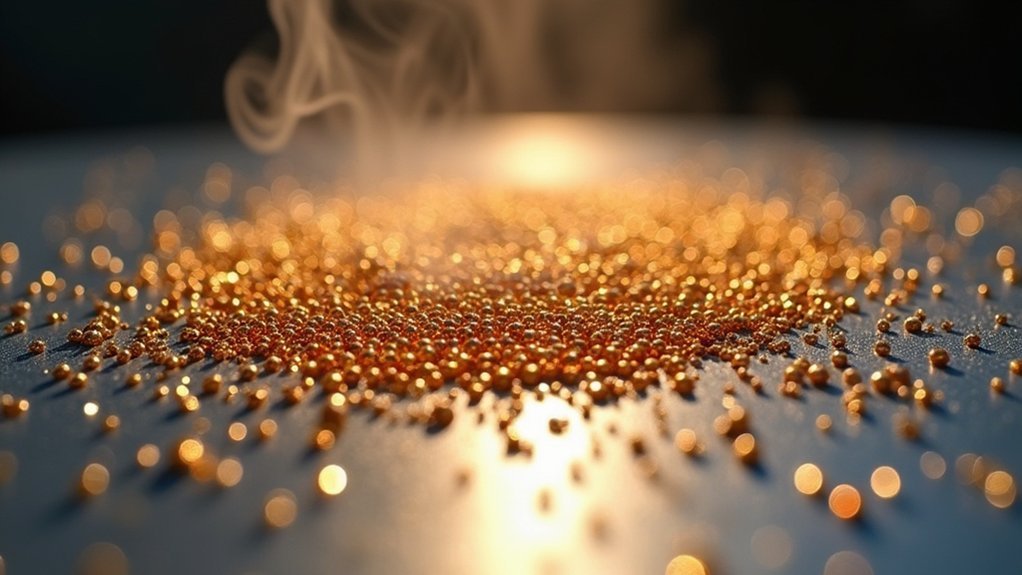
Unlike soldering methods that depend on additional materials, fusing creates seamless bonds by joining metals of the same alloy through controlled heat application alone.
You’ll heat the metals to approximately 850 degrees Celsius, where gold’s melting point lowers due to copper presence. This technique requires exceptional skill and precise timing to prevent complete melting.
The fusing process offers distinct advantages for granulation work:
- No solder flooding – prevents filling spaces between granules and surface
- Seamless attachment – creates invisible bonds between metals
- Chemical reaction – carbon from burnt adhesives facilitates copper-gold alloying
- Temperature precision – requires exact heat control at 850°C
- Same alloy requirement – only works with identical metal compositions
You’ll find fusing particularly valuable when attaching granules to metal surfaces, as it maintains the decorative spacing that traditional solder would compromise.
Colloidal Soldering: The Etruscan Secret
Ancient Etruscan goldsmiths mastered a sophisticated alternative to traditional fusing that revolutionized granulation work. They developed colloidal soldering, a technique using tragacanth gum and copper salts as a binding agent.
You’ll apply this colloidal mixture directly to your metal surface, eliminating the need for flux that could dislodge delicate granules. The copper salts create strong metallic bonds by diffusing into both granules and base metal during firing.
You’ll heat the assembly in a reducing atmosphere at approximately 890°C, allowing the copper to penetrate and link components seamlessly. This method requires precise execution but produces incredibly refined results.
Unlike conventional soldering, you won’t see solder remnants afterward. Examples like First Century B.C. Indian earrings demonstrate this technique’s exceptional capabilities in creating intricate granulated surfaces.
The Step-by-Step Granulation Process
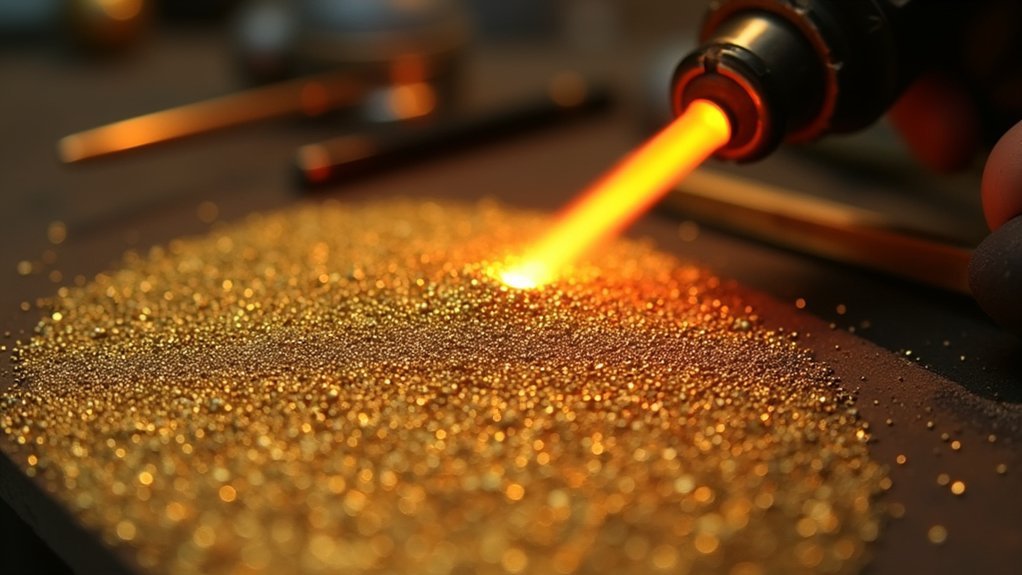
While mastering colloidal soldering provides the foundation for exceptional granulation, executing the complete process requires methodical preparation and precise technique.
You’ll need to follow these essential steps:
- Prepare your base metal piece as the foundation for decorative elements.
- Create small, pinhead-sized orbs by melting high-karat gold into perfect spheres.
- Use precision tweezers to position each granule accurately on the surface.
- Apply controlled heat carefully to fuse together the granules and base metal without solder.
- Polish and refine the finished piece to highlight the intricate surface details.
When granules are placed correctly and heated properly, they’ll bond permanently without displacing.
This ancient technique demands patience and skill, but produces stunning textural effects that distinguish granulated jewelry from other decorative methods.
Tools and Equipment Used in Ancient Granulation
Mastering these granulation techniques required ancient craftsmen to develop and refine specialized tools that differed considerably from modern jewelry-making equipment.
You’d need precise tweezers to carefully position each tiny granule on metal surfaces without disturbing neighboring elements. A controlled furnace was essential for achieving exact temperatures during the fusing process.
Craftsmen relied on rolling mills to create thin metal sheets, then cut them into squares or coiled them into wire for granule production. The rochoir served as your mixing tool for combining solder and flux, while crucibles allowed you to melt gold into perfect spheres.
Rolling mills transformed raw metal into delicate sheets while crucibles melted precious gold into perfectly spherical granules for ancient artisans.
Sorting trays helped guarantee uniform granule sizes, and tragacanth acted as organic adhesive to secure granules before heating.
Modern Revival and Contemporary Applications
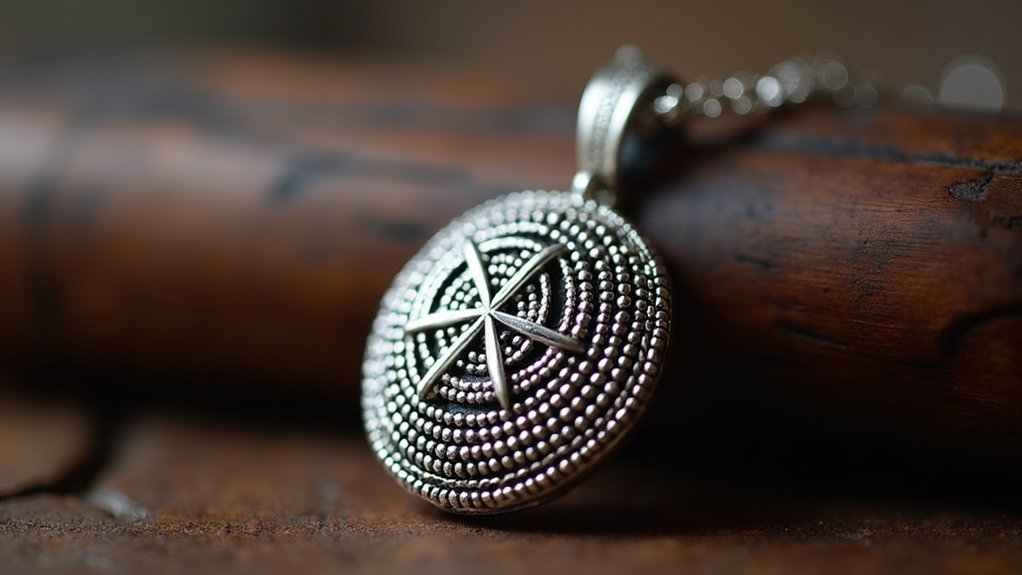
After centuries of dormancy, the ancient art of granulation experienced a remarkable renaissance in the 20th century when pioneering artisans like Fulco di Verdura and Elizabeth Gage began incorporating these meticulous techniques into contemporary jewelry designs.
You’ll find today’s granulation seamlessly blends traditional techniques with modern aesthetics, creating pieces that honor history while satisfying contemporary tastes.
Modern jewelers experiment with high-karat gold and innovative soldering methods to achieve intricate textures.
Contemporary jewelry makers now emphasize:
- Workshops and classes teaching granulation to new generations
- Collections featuring sustainable materials and recycled gold
- Experimental approaches using colloidal soldering techniques
- Granulated textures that enhance gemstone settings
- Designs balancing historical craftsmanship with current market demands
This revival guarantees granulation’s continued relevance in today’s jewelry landscape.
Frequently Asked Questions
What Is Granulation in Jewelry?
You’ll find granulation’s a jewelry technique where you fuse tiny gold spheres onto metal surfaces, creating textured patterns. You’re working with an ancient craft dating back to 2500 B.C., requiring exceptional precision.
What Is Granulation in Simple Terms?
You’ll attach tiny metal balls called granules onto jewelry surfaces to create decorative patterns. You’re fundamentally fusing small spheres without solder, using controlled heat to bond them permanently for beautiful textured designs.
What Is the Granulation Technique of Gold?
You’ll create tiny gold spheres by melting high-karat gold into pinhead-sized balls, then precisely place them onto jewelry surfaces using adhesives before applying controlled heat to fuse them permanently.
What Is Granulation in Greek Jewelry?
You’ll find granulation in Greek jewelry involves fusing tiny gold spheres onto surfaces to create intricate patterns and textures. Greek artisans perfected this technique after the Mycenaean Age, using high-karat gold for detailed decorative motifs.
In Summary
You’ve now discovered granulation’s journey from ancient Etruscan workshops to today’s jewelry studios. You’ll find this technique requires patience, precision, and respect for traditional methods. Whether you’re creating simple dot patterns or complex geometric designs, you’re participating in a craft that’s connected civilizations for millennia. Don’t rush the process—master the fundamentals of heat control and copper salts, and you’ll create stunning granulated pieces.

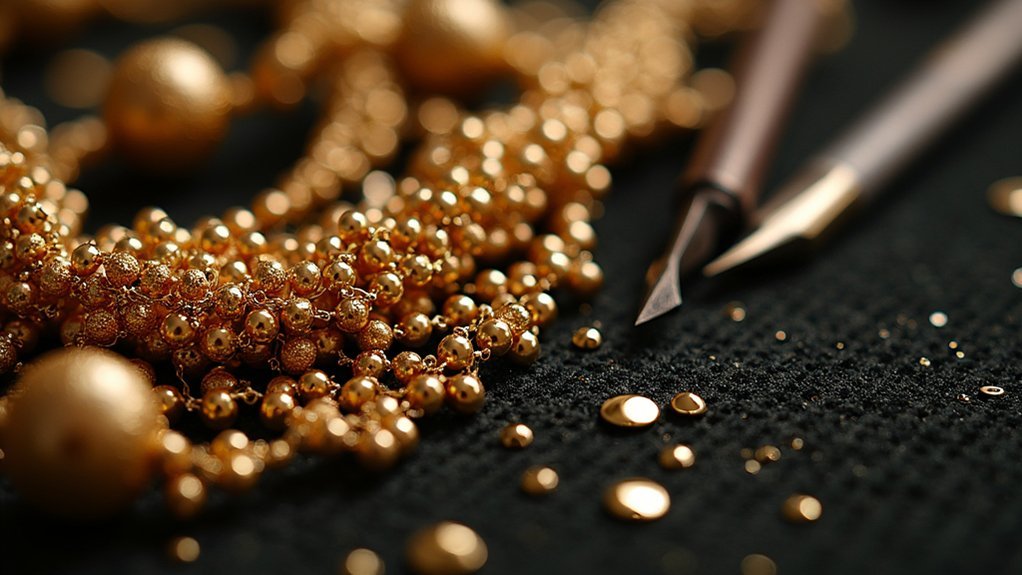
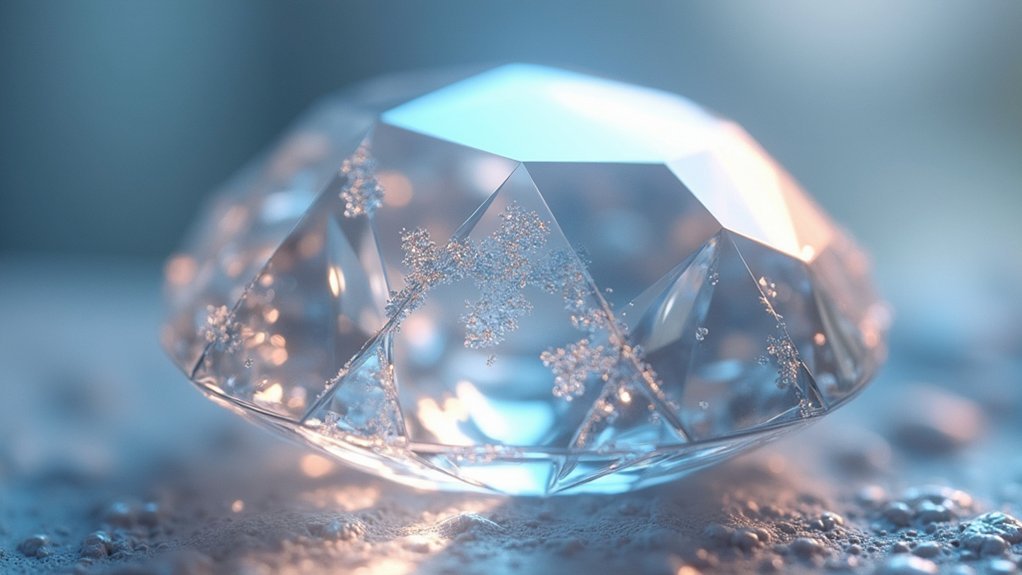
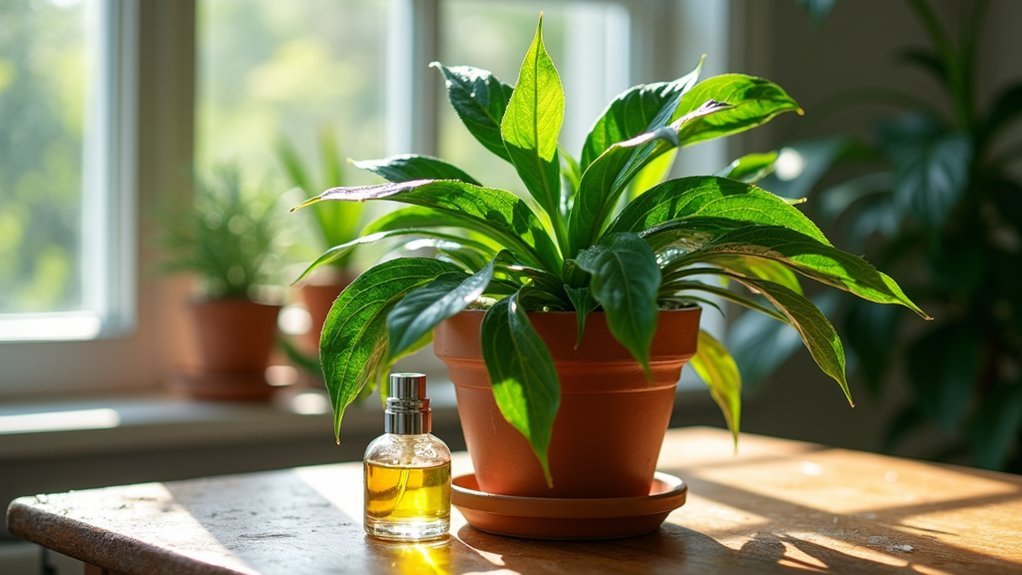
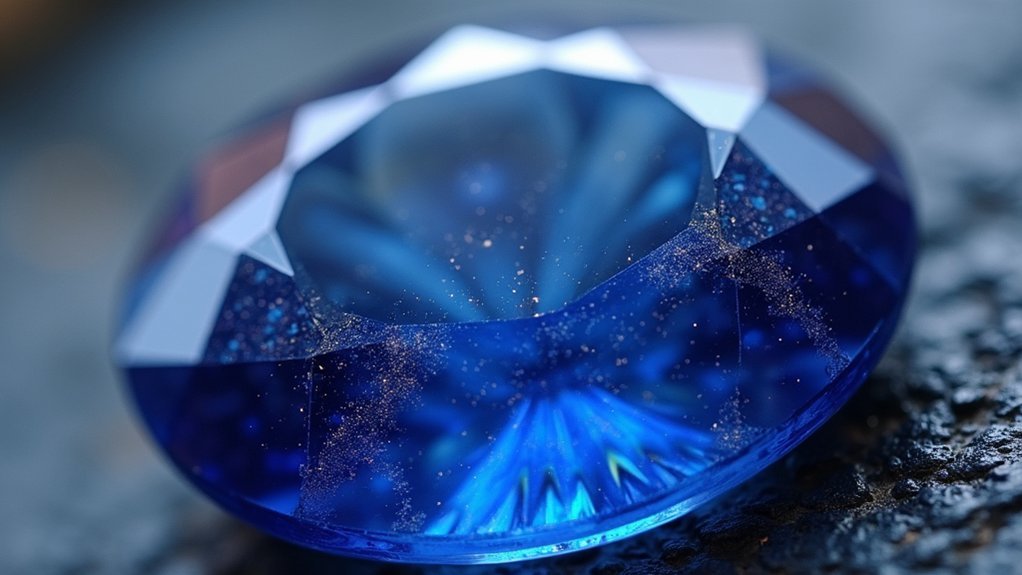
Leave a Reply